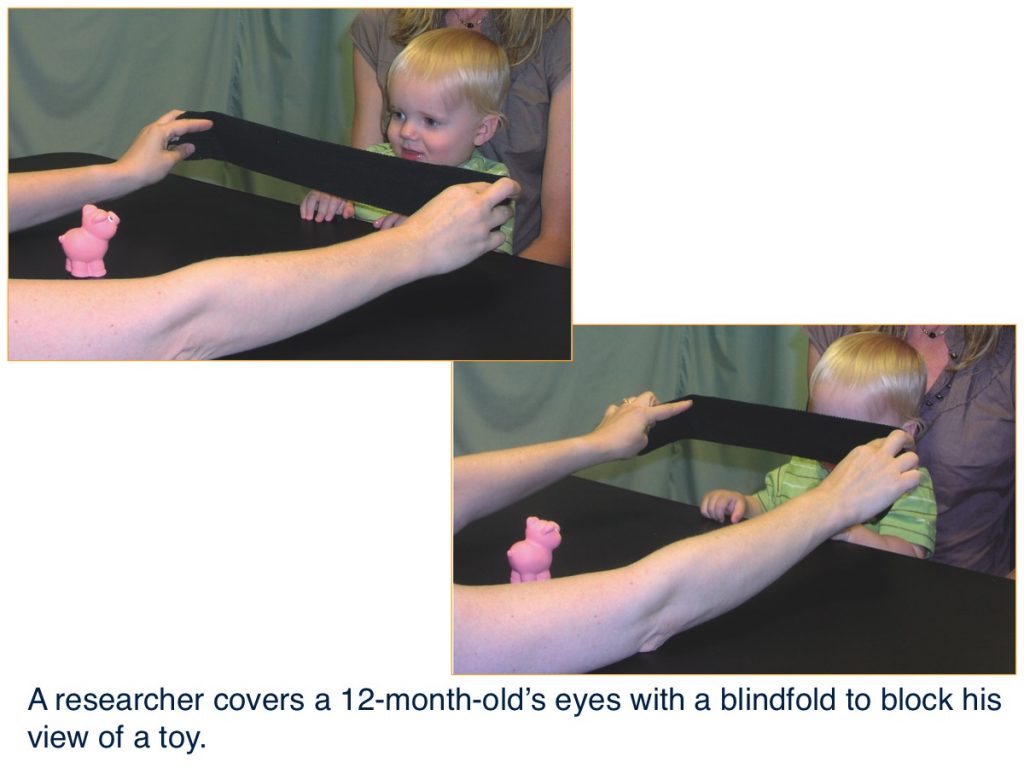
Understanding that a person cannot “see” when their eyes are closed is important. But it’s not the only thing infants need to learn about sharing attention. During everyday interactions, infants will encounter things that block their view. A hat may slip down over their eyes or a person may stand up in front of them. Do 12-month-olds understand that barriers can block another person’s view in the same way that closing their eyes can? Let’s look at what researchers have found using the same eye-gaze game.
They made some slight changes to the game to test the effect of barriers. Instead of looking with closed eyes, the adult wore a blindfold over her eyes. Twelve-month-olds understand eye closure. But they looked to where the blindfolded adult turned her head. Why did infants make this mistake? The researchers thought infants did not understand that a blindfold blocked what a person can see.
They tested this idea with another group of 12-month-olds. These 12-month-olds had self-experience with the blindfold before they played the eye-gaze game. The photos show an infant getting self-experience with the black opaque cloth. An adult raised and lowered the cloth several times to block the child’s view of the toys. During this game, these infants were getting firsthand experience that blindfolds blocked their view. Could the children use this self-experience to teach them about the other person? This is the key question researchers wanted to answer.
How do you think children responded when the adult covered her own eyes with the blindfold and turned to the side? The results showed that self-experience with the blindfold helped infants. The 12-month-olds no longer followed the adult’s gaze when she wore the blindfold. Infants were able to use their own experience to understand their social partner’s experience. The infants learned that if a blindfold blocks their eyes from seeing, it must block the adult’s eyes from seeing too.
Infants can use their own experience to understand others. This idea is important to social-emotional development. In the module “The Power of Learning through Imitation,” we discussed research showing that imitation helps children learn that other people are “like me.” These gaze-following findings show that self-experience with eyes is valuable to children. It helps children understand how others are like them in terms of their visual perception. Over time, children learn from these “like me” experiences. They discover that other people who act like them can have similar thoughts and feelings.
-
- Autism Spectrum Disorder (ASD)
- a developmental disorder that impairs a child’s social and communication skills
- Directing attention
- using eye gaze or a gesture to direct another person’s attention to an object or event
- Following attention
- following another person’s eye gaze or gesture
- Gaze following
- looking at what another person is looking at
- Joint attention
- shared attention between social partners to an object or event